| Description |
- Bridges Thunderbolt-enabled devices to DisplayPort displays.
- Supports various resolutions.
- Offers plug-and-play functionality.
- Compact design for convenience.
|
- Connects Thunderbolt-enabled devices to HDMI displays
- Enables high-definition video and audio transmission
- Ideal for extending or mirroring screens onto larger displays
- Various designs and specifications available
- Check compatibility and additional features before purchasing
|
- Connects devices with DVI output to devices with VGA input
- Converts digital DVI signals to analog VGA signals
- Allows older VGA-compatible monitors or projectors to be used with newer DVI-equipped computers or devices
- Typically used for displaying video or graphics from a computer to a monitor, projector, or TV
- Provides a simple and cost-effective solution for compatibility between different types of video connections
|
- Connector Conversion: BNC to RCA
- Compatibility: Professional to Consumer Devices
- Construction: Durable Materials
- Use Cases: Surveillance to Home Entertainment
- Easy Installation: Plug and Play
- Signal Quality: Maintained with High-Quality Cables
|
- Connectivity: Links Micro HDMI devices to HDMI displays.
- Compatibility: Works with Micro HDMI technology.
- Resolution Support: Supports SD, HD, and 4K resolutions.
- Audio and Video Transmission: Transmits both audio and video signals.
- Construction: Durable materials ensure reliable signal transmission.
- Length Options: Available in various lengths for different setups.
- Plug-and-Play: Simple connection without additional software.
- Versatility: Suitable for cameras, tablets, and other devices to connect to TVs, monitors, or projectors.
|
- Connectivity: Links devices with Mini HDMI outputs to HDMI inputs.
- Compatibility: Works with Mini HDMI technology, common in cameras and tablets.
- Resolution Support: Transmits SD, HD, and possibly 4K resolutions.
- Audio and Video: Delivers both audio and video signals.
- Construction: Durable materials ensure reliable signal transmission.
- Length Options: Available in various lengths for different setups.
- Plug-and-Play: Simple connection without additional software.
- Versatility: Suitable for cameras, tablets, and other devices to connect to TVs, monitors, or projectors.
|
| Content | A Thunderbolt-to-DisplayPort adapter is a device used to connect a Thunderbolt-enabled device, such as a computer or laptop, to a DisplayPort-enabled display or monitor.
Here's a brief description of its functionality and features:
- Connectivity: The adapter allows you to bridge the gap between devices with Thunderbolt ports and displays equipped with DisplayPort connectors.
- Compatibility: It is designed to work with devices that have Thunderbolt ports, including MacBooks, PCs, and laptops, and displays that support DisplayPort connections.
- Display Support: It enables you to transmit video and audio signals from your Thunderbolt device to the DisplayPort display, allowing you to mirror or extend your screen.
- Resolution Support: Depending on the specific adapter and the capabilities of your devices, it may support various resolutions, including Full HD (1080p), Quad HD (1440p), and even Ultra HD (4K) resolutions.
- Plug-and-Play: In most cases, these adapters are plug-and-play devices, requiring no additional software installation. Simply connect the adapter to your Thunderbolt port and the DisplayPort cable to your display, and your devices should recognize each other.
- Compact Design: They typically have a compact and portable design, making them convenient for travel or use in different work environments.
- Bi-Directional Support: Some adapters may support bi-directional functionality, allowing you to connect a Thunderbolt-enabled display to a device with a DisplayPort output.
Overall, Thunderbolt-to-DisplayPort adapters provide a simple and effective solution for connecting Thunderbolt devices to DisplayPort displays, ensuring compatibility and seamless transmission of audio and video signals. | A Thunderbolt-to-HDMI adapter is a device that allows you to connect a Thunderbolt-enabled device, such as a computer or laptop, to a display or monitor that uses HDMI input. Thunderbolt is a high-speed input/output technology developed by Intel, commonly found on Apple computers and some PCs. HDMI (High Definition Multimedia Interface) is a widely used standard for transmitting high-definition video and audio signals.
The adapter typically has a Thunderbolt connector on one end, which plugs into the Thunderbolt port on your device, and an HDMI connector on the other end, which plugs into the HDMI port on your display. This allows you to extend or mirror your device's screen onto the external monitor or TV, enabling you to enjoy high-definition content, presentations, or other multimedia content on a larger screen.
Thunderbolt-to-HDMI adapters come in various designs and specifications, so it's essential to ensure compatibility with your device and display. Additionally, some adapters may support additional features such as 4K resolution, audio output, or multiple display connections, so it's worth considering your specific needs when selecting an adapter. |
- A DVI to VGA cable serves as a bridge between devices utilizing different video output standards, specifically Digital Visual Interface (DVI) and Video Graphics Array (VGA). DVI is a digital interface commonly found on modern computers, laptops, and other multimedia devices, while VGA is an analog interface that has been prevalent in older monitors, projectors, and displays.This cable facilitates the connection of a device equipped with a DVI output port to a display or peripheral device featuring a VGA input port. It effectively translates the digital signals outputted by the DVI port into analog signals compatible with VGA input, ensuring seamless compatibility between the two devices.Typically, the DVI end of the cable plugs into the DVI output port of the source device, such as a computer or DVD player, while the VGA end connects to the VGA input port of the display device, such as a monitor or projector. Once connected, the cable enables the transmission of video signals from the source device to the display device, allowing users to view images, videos, presentations, and other visual content.
This cable is particularly useful in scenarios where users need to connect newer devices with DVI outputs to older displays or projectors that only support VGA input. By providing a straightforward and reliable means of conversion between digital and analog video signals, it eliminates the need for complex adapters or converters, streamlining the setup process and ensuring compatibility without sacrificing video quality.
Furthermore, DVI to VGA cables are often used in various applications, including business presentations, educational settings, home entertainment systems, and professional audiovisual setups. Whether you're connecting a laptop to a classroom projector, a desktop computer to a legacy monitor, or a multimedia player to a TV screen, this cable offers a practical and cost-effective solution for achieving interoperability between different video standards.
In summary, a DVI to VGA cable serves as a versatile and essential tool for connecting devices with disparate video output standards, enabling seamless integration and compatibility in a wide range of multimedia setups and environments.
| BNC-to-RCA adapters are connectors used to convert BNC (Bayonet Neill-Concelman) connections to RCA (Radio Corporation of America) connections, allowing compatibility between devices with different types of connectors. Here's a description of their features:
- Connector Conversion: BNC-to-RCA adapters enable the conversion of BNC connectors, commonly found in professional video equipment and surveillance systems, to RCA connectors, which are more prevalent in consumer electronics such as TVs, VCRs, and DVD players.
- Compatibility: These adapters allow devices with BNC outputs, such as CCTV cameras or professional video equipment, to be connected to devices with RCA inputs, such as TVs or monitors.
- Construction: BNC-to-RCA adapters typically have a female BNC connector on one end and a male RCA connector on the other end. They are constructed with durable materials to ensure reliable signal transmission.
- Use Cases: They are commonly used in various applications where compatibility between BNC and RCA connections is required. For example, they can be used to connect surveillance cameras to consumer-grade monitors or to integrate professional video equipment with home entertainment systems.
- Easy Installation: These adapters are simple to use and require no tools for installation. Users can easily plug the BNC end into the device's BNC output and connect the RCA end to the RCA input of the target device.
- Signal Quality: While adapters themselves do not affect signal quality, it's essential to ensure that the cables used with the adapters are of high quality to maintain signal integrity during transmission.
Overall, BNC-to-RCA adapters provide a convenient solution for bridging the gap between devices with BNC and RCA connectors, allowing for seamless connectivity in various audiovisual setups. | Standard Micro HDMI cables are used to connect devices with Micro HDMI outputs to displays, monitors, or other devices with compatible HDMI inputs. Here's a description of their features:
- Connectivity: Standard Micro HDMI cables provide a reliable connection between devices with Micro HDMI outputs, such as cameras, camcorders, or tablets, and displays, TVs, or projectors equipped with HDMI inputs.
- Compatibility: These cables are compatible with devices that support Micro HDMI technology, including many digital cameras, camcorders, and portable devices. They can connect to HDMI displays, TVs, or projectors from various manufacturers.
- Resolution Support: Standard Micro HDMI cables support various resolutions, including standard definition (SD), high definition (HD), and even some higher resolutions like 4K, depending on the capabilities of the connected devices.
- Audio and Video: Micro HDMI cables transmit both audio and video signals, allowing users to enjoy high-definition multimedia content on compatible HDMI displays or monitors.
- Construction: These cables are typically constructed with high-quality materials to ensure durability and reliable signal transmission. They may feature gold-plated connectors for better conductivity and resistance to corrosion.
- Length Options: Standard Micro HDMI cables are available in various lengths to accommodate different setups and distances between devices and displays.
- Plug-and-Play: They are generally plug-and-play devices, requiring no additional drivers or software installation. Users can simply plug one end of the cable into the Micro HDMI output of their device and the other end into the HDMI input of their display.
- Versatility: Standard Micro HDMI cables are versatile and can be used for various applications, including connecting cameras or camcorders to TVs or monitors for viewing photos or videos, streaming content from tablets to TVs, or extending desktop setups to larger displays.
Overall, Standard Micro HDMI cables offer a convenient and reliable solution for connecting devices with Micro HDMI outputs to HDMI displays or monitors, enabling seamless audio and video transmission for a wide range of applications. | Standard Mini HDMI cables are used to connect devices with Mini HDMI outputs to displays, monitors, or other devices with compatible HDMI inputs. Here's a description of their features:
- Connectivity: Standard Mini HDMI cables provide a reliable connection between devices with Mini HDMI outputs, such as cameras, camcorders, or tablets, and displays, TVs, or projectors equipped with HDMI inputs.
- Compatibility: These cables are compatible with devices that support Mini HDMI technology, including many digital cameras, camcorders, and portable devices. They can connect to HDMI displays, TVs, or projectors from various manufacturers.
- Resolution Support: Standard Mini HDMI cables support various resolutions, including standard definition (SD), high definition (HD), and even some higher resolutions like 4K, depending on the capabilities of the connected devices.
- Audio and Video: Mini HDMI cables transmit both audio and video signals, allowing users to enjoy high-definition multimedia content on compatible HDMI displays or monitors.
- Construction: These cables are typically constructed with high-quality materials to ensure durability and reliable signal transmission. They may feature gold-plated connectors for better conductivity and resistance to corrosion.
- Length Options: Standard Mini HDMI cables are available in various lengths to accommodate different setups and distances between devices and displays.
- Plug-and-Play: They are generally plug-and-play devices, requiring no additional drivers or software installation. Users can simply plug one end of the cable into the Mini HDMI output of their device and the other end into the HDMI input of their display.
- Versatility: Standard Mini HDMI cables are versatile and can be used for various applications, including connecting cameras or camcorders to TVs or monitors for viewing photos or videos, streaming content from tablets to TVs, or extending desktop setups to larger displays.
Overall, Standard Mini HDMI cables offer a convenient and reliable solution for connecting devices with Mini HDMI outputs to HDMI displays or monitors, enabling seamless audio and video transmission for a wide range of applications. |
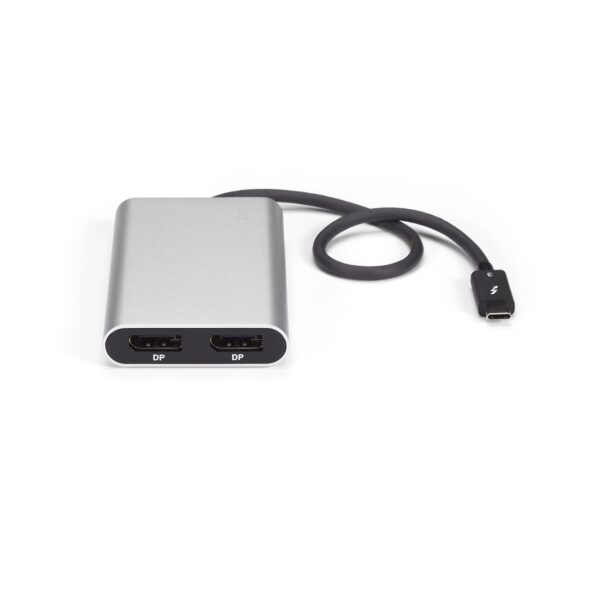
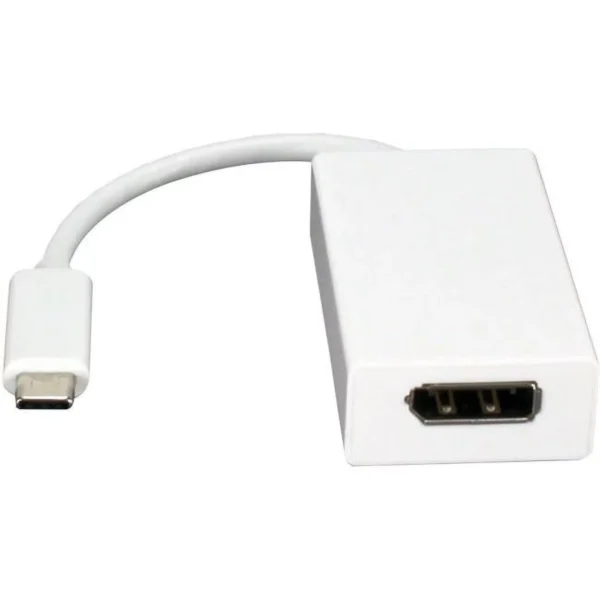
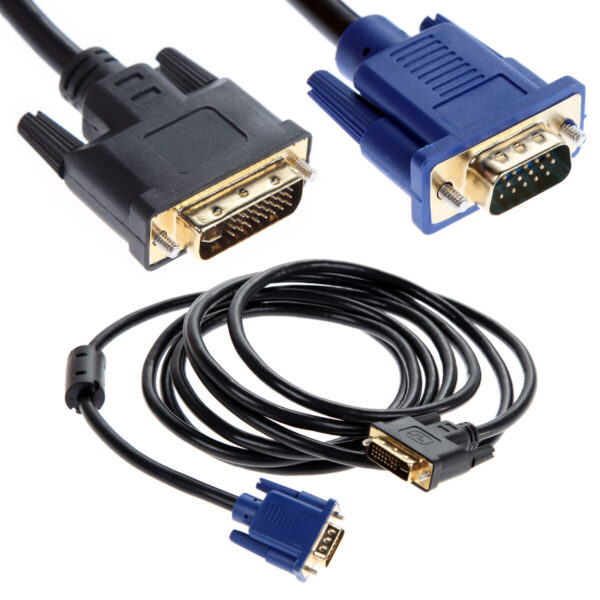
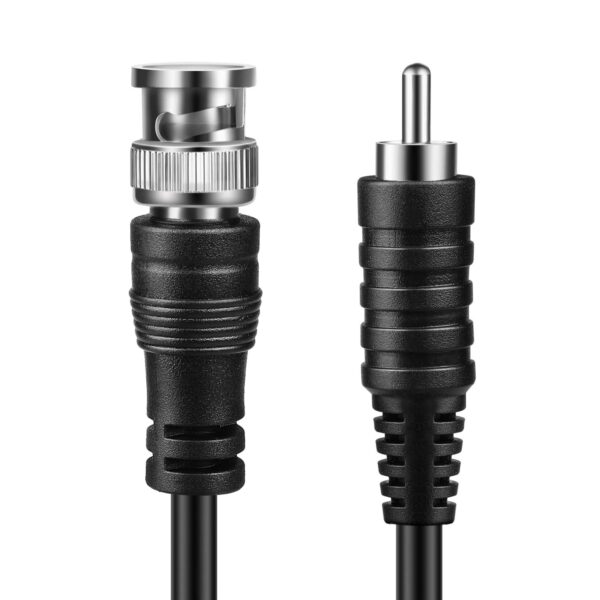
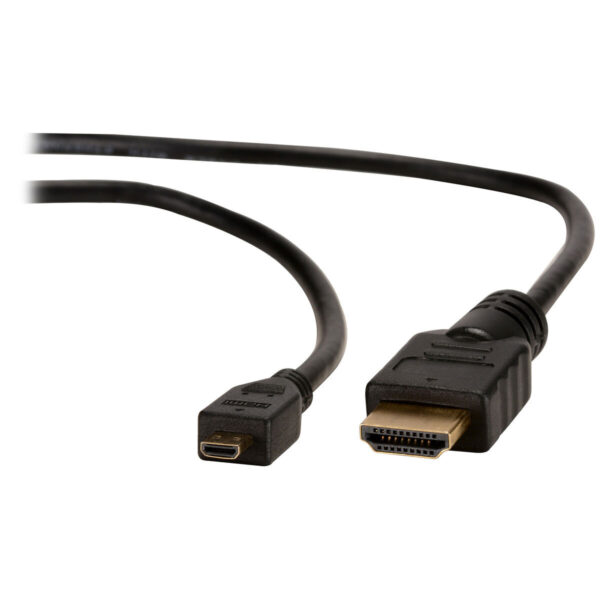
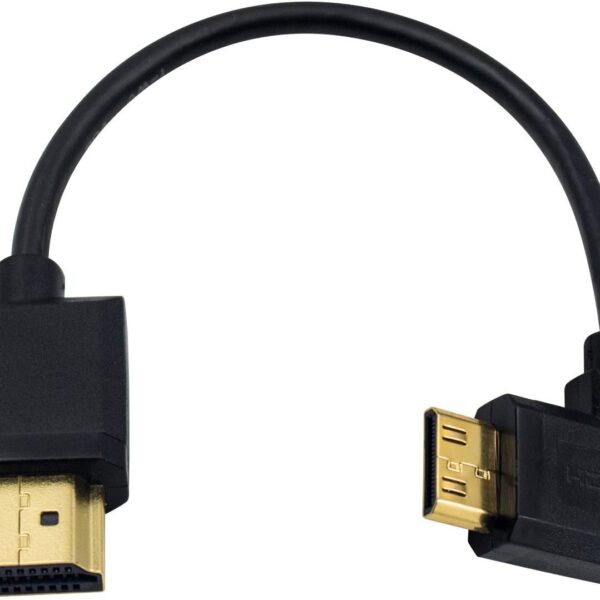
















Rating & Review
There are no reviews yet.